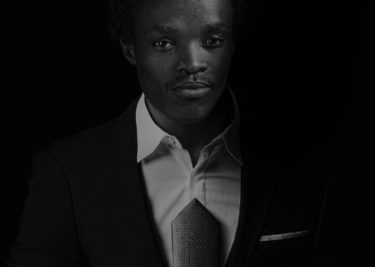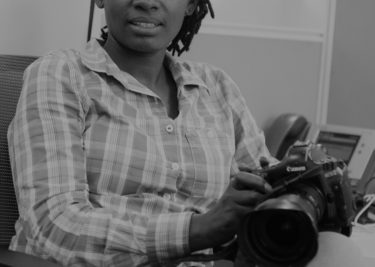Sir Mohinder Dhillion: Our Veteran Photographer

In the sunset years of his life he was known as Sir Mohinder Dhillon. Globally recognised as a photographer, cameraman, photojournalist, war correspondent he had a humble start, one which will probably surprise many.
Born in the small village of Babar Pur in the Punjab in 1931, Mohinder was the third of Tek Singh’s eight children. His father’s decision in 1918 to strike out from his village and head to British East Africa was one that inexorably shaped Mohinder’s life. Nearly thirty years after his arrival, Tek had finally saved up enough money to move his family over from one corner of the British Empire to another. Up until that point in his life, 16 year old Mohinder had never seen a car or motorbike or been to a town, let alone a city as large as Bombay from which the family departed via steamship to Mombasa. The journey was illuminating and tiring. Families would be responsible for carrying all their provisions – from the food they would eat to the charcoal to cook it on, to their own bed rolls which they would roll out and sleep on each night on the deck. Arriving in Mombasa after weeks at sea remained one of the most impressionable moments of Mohinder’s life but it was short lived as the family destination was Nairobi where their father was stationed as an employee of the Railway Services. Their new home was a two-bedroomed Railways house which felt like a palace for the large family.
While Mohinder had been to school in India, all his lessons had been in Urdu. In Nairobi, English was the language of instruction and unfamiliar with the language he was put back several classes in order to catch up. Sitting in a class with children half his size was an enormous blow to the teenager and it sharply affected his confidence in school. As a result he never quite took to classes and ended up failing to secure an O level Certificate by the time he finished school. At 20 he was facing life with a lot of uncertainty: jobless, without a high school certificate and feeling like a failure; it was a difficult time for him as his siblings all seemed to be thriving around him. But life still had plans for him. That same year his father gave him a second-hand Box Brownie camera and he started playing around with photography. Soon he was deeply engrossed by the camera and would spend hours taking photos. Too poor to afford to take his film to the studio for development, he made a makeshift dark room in one corner of the house store where he would delight in experimenting with the use of different filters and light infusions to bring pictures to life from film.
Luckily, fate had yet another gift in store for him. He had applied for a bookkeeping job at a local pharmacist and went for the interview but when they discovered he had no accounting skills or papers he was thrown out. At the time the pharmacy used to run a studio as well, and the desperate Mohinder appealed with the owners for consideration to work in the studio developing photos. The timing couldn’t have been sweeter as Halle Studio’s technician had just resigned. Taking a chance on him the owner, Mrs Haller, agreed and Mohinder was soon walking each day from the railway quarters to his new job in the leafy suburbs that was Westlands.
At the time Halle Studios was the principal photography studio for the East African Standard and within a short time Mohinder was out in the field taking photos of Nairobi’s high society events. It was a period that gave him the opportunity to grow his skills exponentially, yet at the same time it was when he received the most discrimination he had faced in his life. While taking photos at events at white-only establishments, he was not be permitted to eat or have a sip of water, and was often ridiculed for being an Indian with a camera. Nevertheless he persevered and together with Peter Haller even started an “At Home Baby Photography” service where they would roam the suburbs offering photography services. When the studio owner fell ill and wanted to sell up in 1954, Mohinder jumped at the chance to take on the studio and with a loan of Ksh 20,000 moved from photographer to business owner. In time, requests for his photography on more newsworthy stories started coming through and he eagerly jumped at any chance to capture history in the making. By 1959 he had transformed from stills to photojournalism, submitting his photos to newspapers across the region, and soon the world. In those days, photos could only be transmitted globally by radio signal, which was a laborious and long process, but it was the only way to get the African story onto a global stage and Mohinder was committed to doing that. By 1961 his photos were so in demand by entities like Reuters and United Press International that photojournalism was seen as a potential new separate business opportunity and he co-founded Africapix, a name which came to be synonymous with leading photojournalism stories from Africa.
As the winds of change swept the continent, Mohinder was there to capture it – from the internment camps of Kenyan detainees during the Emergency, to the independence celebrations of all the East African countries. At nearly six feet tall he was known as the gentle giant who was fearless in all situations, earning himself the nickname “Death-Wish Dhillon”. From hair raising brushes with Simba rebels in the Congo, to capturing the end of Aden and birth of Yemen, to documenting Idi Amin’s takeover and rule of Uganda, the final days of the Solomonic dynasty of Ethiopia, and the establishment of the Organisation of African Unity, Mohinder captured it all. His early days of running 8 kilometres to school each day protected by his buffalo hide shoes in the winters of the Punjab had hardened him for the life of a photojournalist, lugging 30kg of camera equipment on his back to capture the vital shot. His is an awe-inspiring legacy.
Keen to show his Africa, Mohinder worked on several major documentary projects including Black Man’s Land and No Easy Walk, that told of Kenya’s hard won transition from Colony to Republic. His expansive library of photographs of Haile Selassie’s last world tour where he accompanied the Emperor from Cambodia to Australia to South Korea to Japan chronicles an important chapter of African diplomacy through the lens of the continent’s longest serving monarch. While his photos of the 1985 Ethiopian famine led the world into understanding the tragedy unfolding in that country. Wars called out to him whether in Afghanistan, Kurdistan or Karamoja – his was a quest to bring the news – raw and real to the world. For more than half a century, since he held that little Box Brownie, Mohinder Dhillon lived in service of bearing witness through film that he was able tell – because of his talents, his many languages, even the colour of his skin which allowed him into places others would not have been able to traverse. As a trusted son of Africa, he brought our stories to the world, and in turn showed that we too can tell the world’s stories.
In 2005 for “having performed through newsreel photography, the distinguished humanitarian service of bringing to the attention of the world community critical issues affecting the welfare of the African continent” the award of Knight Commander of the Imperial Ethiopian Order of Saint Mary of Zion was conferred upon him. For the unassuming lion of a man behind the camera, it was the culmination of lifetime of service, even though he thought it was a hoax when he first received the knighthood notice!
Our veteran photographer, Sir Mohinder Dhillon passed away in March 2020 at the age of 88, in Nairobi.
-

- Tom Mboya and Achieng Oneko welcomed home by Jomo Kenyatta after the 1962 Lancaster House pre-independence summit.
-

- At work in 1966 covering the visit of Charles de Gaulle to Ethiopian Emporer Haile Selassie with soundman Jagjit (Jitty) Singh










